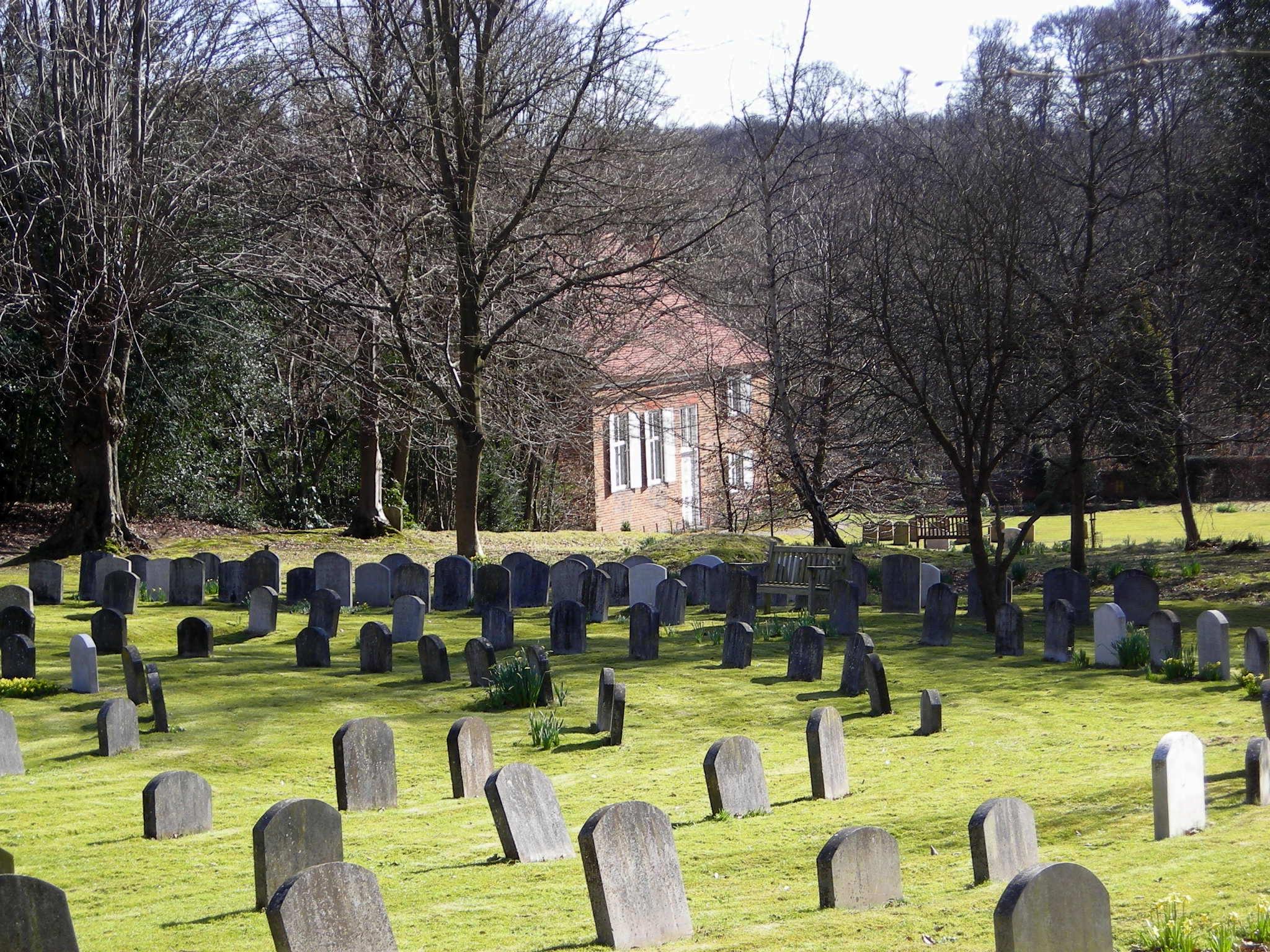St Mary and All Saints
Beaconsfield, Buckinghamshire

Standing in a beautiful valley deep in the Chilterns, this Quaker meeting house dates from 1688 and was one of the first to be purpose built.
Jordans, Buckinghamshire
It is a simple brick building with a hipped tiled roof, restored after a fire in 2005.
The interior is plain and unassuming with simple panelling to the lower walls, raised a little higher on the left hand end wall to mark the elders' seats. There is a fixed wall bench all around the room, and open backed benches. At the other end of the room both the ground and first floor rooms are separated from the main room by screens with shutters.
The men, women and children usually met in three separate rooms but by opening the shutters the three spaces could be united.
William Penn, the founder of Pennsylvania, returned to England and is buried in a marked grave in front of the meeting house.
Beaconsfield, Buckinghamshire
Penn, Buckinghamshire
John Betjeman, observed that ‘within and without, the church has the charm of old watercolours’.
Stoke Poges, Buckinghamshire
The churchyard here is famously said to have inspired Thomas Gray to write his Elegy in a Country Churchyard in 1750, and he is buried close to the east wall of the church.